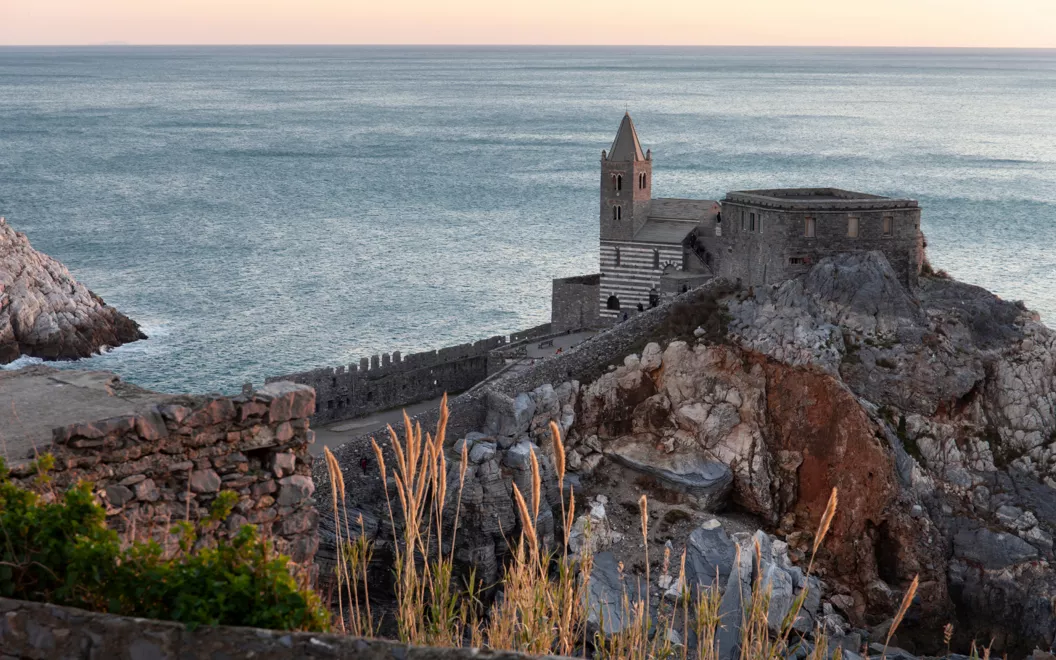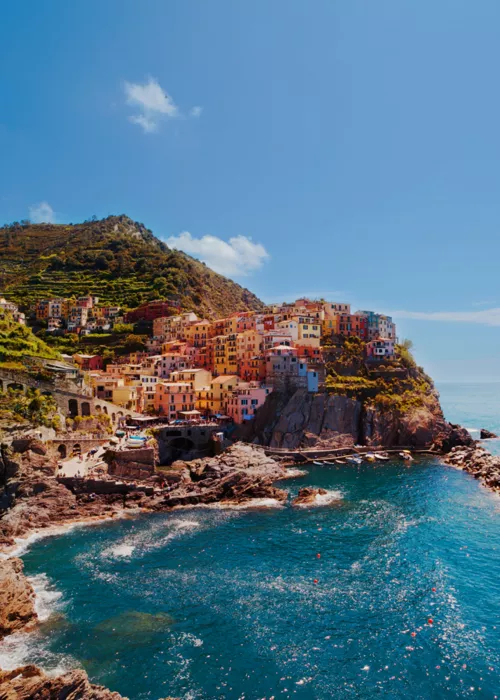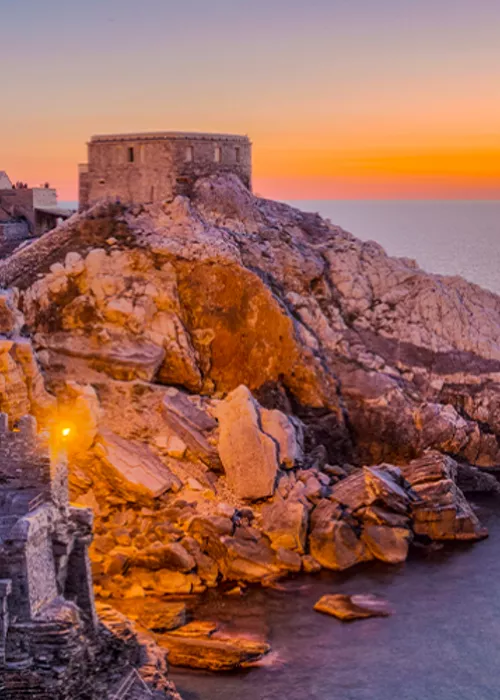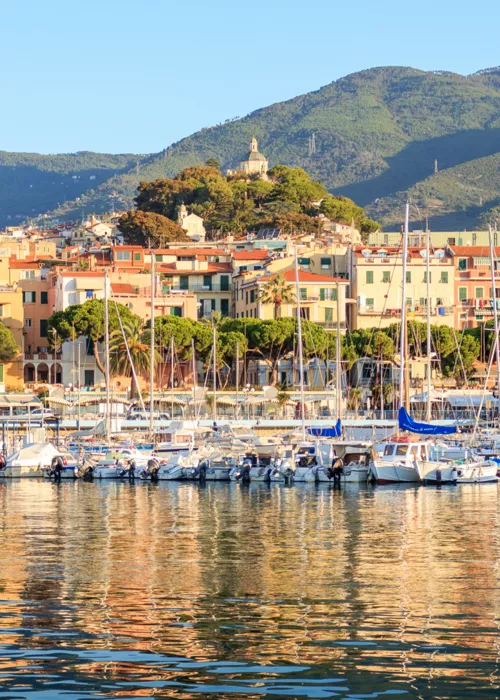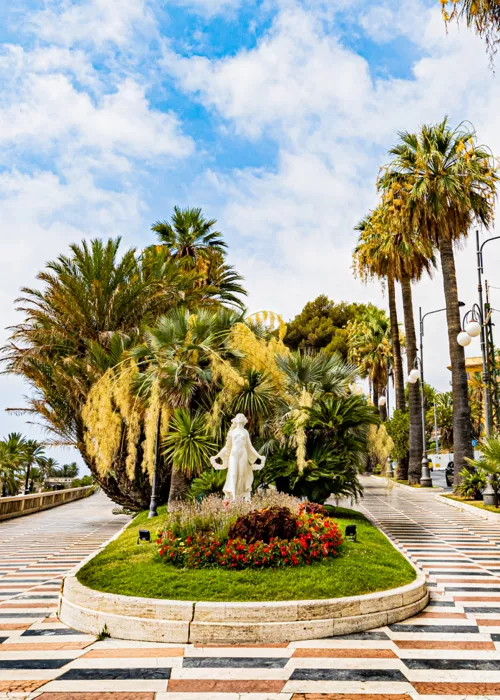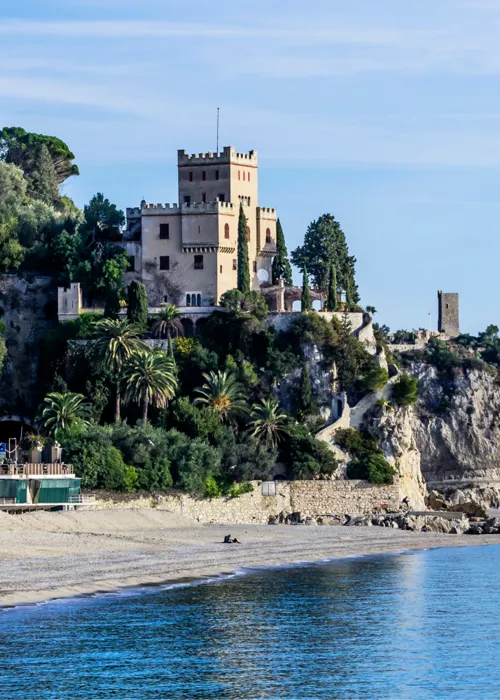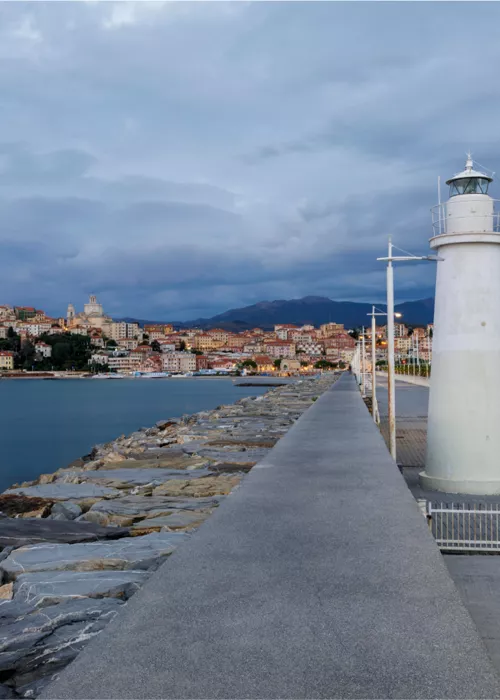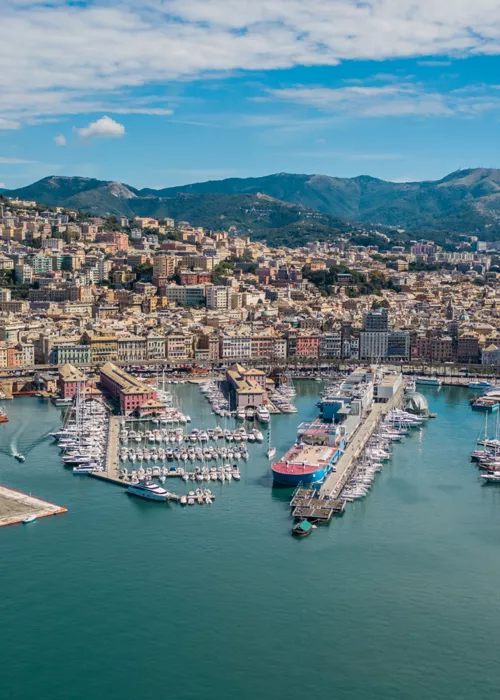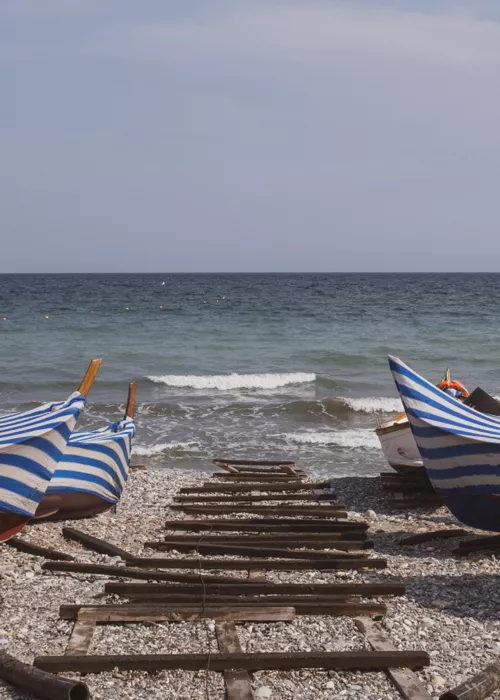Discovering Lerici

Starting from Levante, Lerici lies in the centre of a small natural bay, with steps and alleyways leading to the ancient Genoese castle. The historic centre is wedged between the fortress and the sea, in a harmonious integration of the medieval core, 18th-century stately homes, fortifications and tall, colourful houses. In this little corner of Liguria, the landscape itself is part of the flavour, whether you're on the seafront, at the top of the hill overlooking the bay, or among the narrow village streets. In the centre of the village you'll find Baroni, a great place to go if you want to sample the local wines accompanied by Ligurian specialities and an excellent focaccia. Nestled in the Rocchetta woods above the hill of Lerici is the Osteria di Redarca, where the traditional dishes include mussels, stuffed or with marinara sauce.
Further inland, it's worth taking a detour to Castelnuovo Magra where you can visit Azienda Agricola Maneterra, a small winery founded by agronomist and wine expert Claudio Felisso and dedicated entirely to promoting Vermentino wine. A little further on, in Luni, is another winery:La Pietra del Focolare, where the Salvetti family cultivates the Vermentino vine with passion and incredible attention to detail.
Great food in La Spezia

From Lerici, along the breathtaking seafront walk, you come firstly to the small beachfront hamlet of San Terenzo, then to Fiascherino and finally Tellaro, a favourite haunt of the writer Mario Soldati. The pastel-coloured houses clustered around the church and the lively little streets evoke tales of sea and land, fishermen and farmers. The ideal place for a foodie trip, or just to admire the view which in itself is worth the journey, is the Miramare hotel and restaurant. The road might be full of twists and turns, but it's just a few kilometres to La Spezia, whose historic centre, packed with shops, bars and clubs, is traversed by Via del Prione. Originally called Carugio Drito, this is the main street and probably the oldest in the city. It is said that a large stone (in Genoese "pria") along this street was where the town criers would read the decrees of the Genoese Republic to the population.
On the edge of the pedestrian zone is a local culinary institution, La Pia. And if a trip to the Naval Museum will give you an overview of Italy's centuries of seafaring history, a visit to Osteria della Corte tells the story of Silvia Cardelli and Andrea Ferrero's passion for fine dining. Part bistro, part lounge bar with kitchen, "L'Accanto" is another brainchild of Silvia and Andrea, opened with the idea of expanding the restaurant's offering. In the rooms that were once the cellars of a city-centre building, the restaurant All’Inferno dal 1905 has been run by the D'Avanzo family for three generations. Don't miss the classic mesciua: a soup made from chickpeas, spelt and beans.
Portovenere

Continuing along the coastline, another worthy port of call is L'Osteria Picciarello, in Marola along the road to Portovenere. Housed in a former grocery store, the fish served here is always freshly-caught. Portovenere still has the appearance of a medieval village, with a main thoroughfare running through the centre with its colourful houses, boutiques and bars. Highlights include Castle Doria and St Lawrence's Church, which was consecrated in 1130 and contains some noteworthy artworks. Just as lively is the sea front, which leads to the unmistakable and scenic church of St Peter, built on a rocky promontory and reminiscent of a ship's bow dominating the waves. In Portovenere there are many opportunities to sample the local cuisine, starting with the Antica Osteria del Carugio on the main street, serving regional dishes inspired by the typical flavours of the seafront villages. The Palmaria Restaurant, with its magnificent veranda at the Grand Hotel Portovenere, offers a dining experience that strikes the perfect balance between culinary tradition and creative flair. Another eatery to try is Anciùa Ligurian Street Food, a delightful little establishment serving traditional Ligurian snacks, or La Caracca, known for its traditional apéritifs and homemade pesto.
Reachable in a few minutes by boat and a UNESCO World Heritage Site since 1997, the island of Palmaria has a network of trails cris-crossing the Mediterranean scrub, dotted with historic buildings and beautiful bays and coves. The landscape of pines, holm oaks and olive trees has a single vineyard, which covers half a hectare and produces about a thousand bottles of white wine from Vermentino, Albarola and Trebbiano grapes. A recommended place to eat after a boat trip is the restaurant Il Pozzale.


